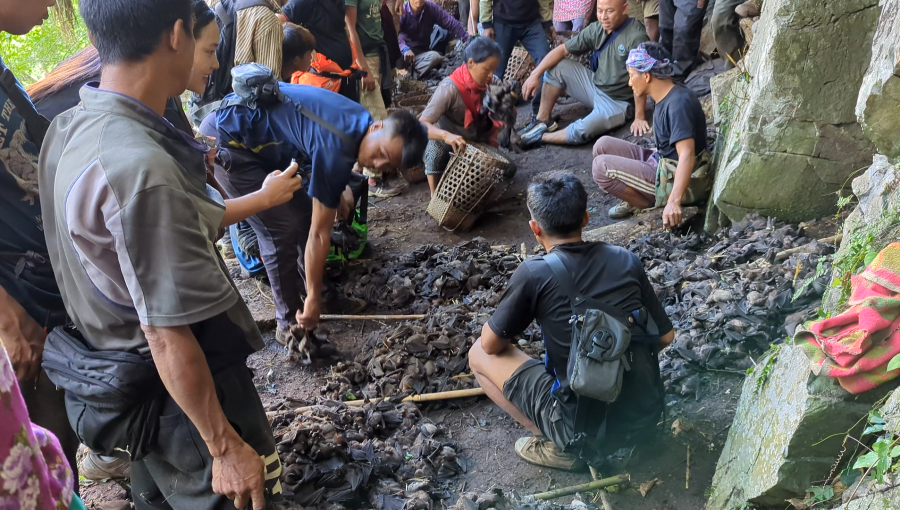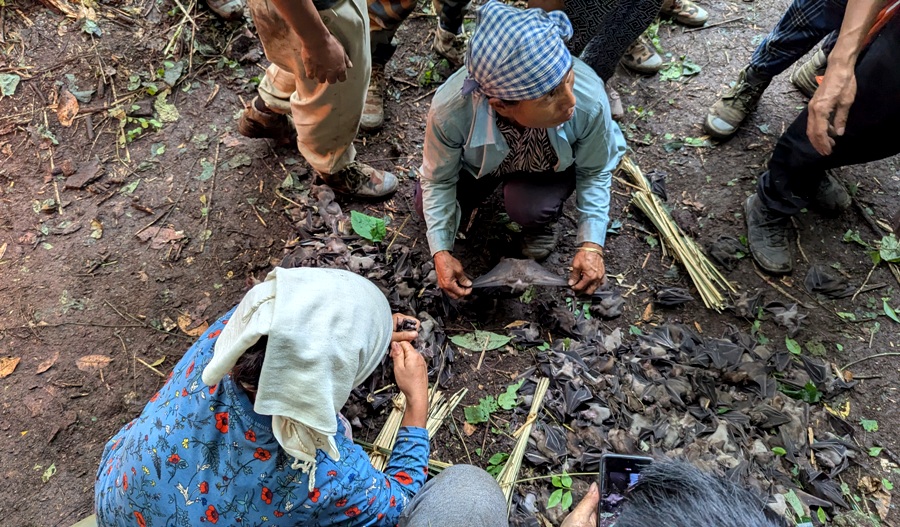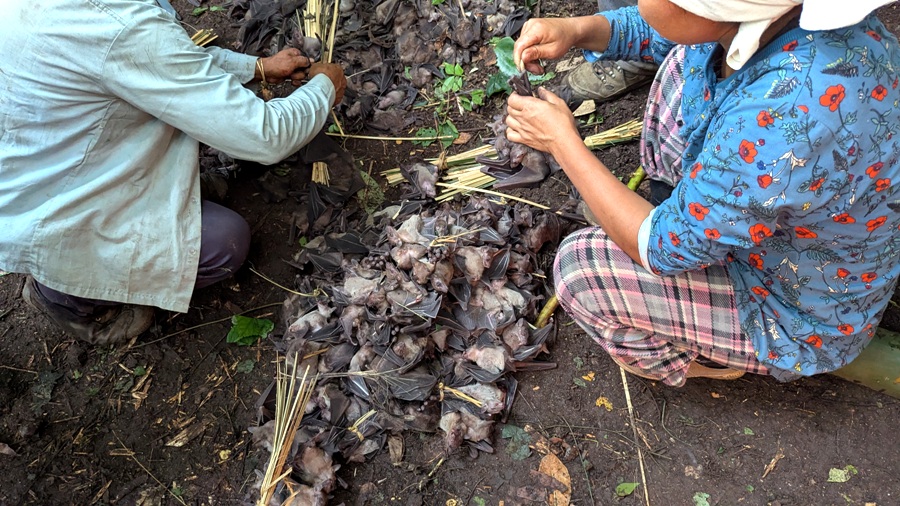SUNDAY, DECEMBER 07, 2025
- Home
- Bat Harvest Festival unites Bomrr clan across villages
Bat Harvest Festival unites Bomrr clan across villages
Bomrr clan members gather annually at Mimi village’s cave for the traditional Bat Harvest Festival celebrating unity and heritage.
Share

MIMI — Every year, in the second week of October, members of the Bomrr clan assemble at Bomrr Laap Khen, a complex cave located about an hour’s walk below Mimi village in Kiphire district, to keep alive the age-old practice passed down through generations.
This year, nearly 100 clan members participated in the annual Bat Harvest Festival held from October 8 to the 10th.
“We celebrate this bat festival every year in the month of October, right after the local festival—the Photangnzü festival celebrated from October 1 to 6—is over,” said Nuheymong S Bomrr, owner of the cave, speaking to Eastern Mirror at the site last week.
The festival brings together Bomrr clansmen from eight villages under Mimi circle of Pungro subdivision.
“In doing this, we also get to know our brothers in different villages, especially the newborn ones. Though they don’t come, their names are registered in the Bomrr clan. So we get an idea of the number of male children born in a year and those who have passed away,” he explained.
Also read: Naga Hill Ophiolite among 7 sites added to UNESCO tentative list
A major aspect of the festival is the labour-intensive process of collecting firewood and bringing it inside the cave. There are two fireplace points within Bomrr Laap Khen: one near the entrance and another on the far side, accessible only by climbing roughly 150 feet.
Men and women of all ages carry loaded baskets of firewood up the steep incline, navigating the climb with nothing more than a single rope for support.

Considering the extreme challenge of this climb, Nuheymong appealed to the government to prioritise accessibility and safety by installing a sturdy ladder inside the cave, noting that such facilities would greatly ease access to the farther points.
The collected wood is stacked and lit once preparations are complete, with the fires used to smoke the bats inside the cave. The largest harvest typically occurs on the second day, though significant numbers are collected on the first and last days as well.
Names of all male members of the Bomrr clan, young and old, are registered, and the harvested bats are distributed equally among them.
Read more: Nagaland signs MoU to promote jute cultivation across seven districts
Nuheymong added that in-laws are also given a share of the harvest, and in return, they help with the celebrations and the labour-intensive work, including collecting firewood from nearby forests.
“It’s very tasking; it’s not easy. However, this is one unique celebration of a very beautiful tradition,” he said.
The festival also serves as a way to monitor the health of the bat population. While the majority are hunted, some bats are allowed to escape to ensure regeneration. “One beautiful thing is that there is no shortage or decline in their population even though this tradition has been practised for centuries,” he added.

Regarding health concerns related to consuming bats, Nuheymong said that there have been no adverse incidents so far.
“Researchers once took blood samples from people who consume bats, and there were no findings indicating any health effects,” he said.
Narola, mother of Nuheymong, recalled first observing the festival in 1994 when her son was a year old. She recalled that gatherings were smaller in the past and remembered the physical strain of carrying firewood to the cave.
She also said that their forefathers traditionally consumed bats to treat diarrhoea.
Editor's pick: Nagaland: Heritage and potential drive Tseminyu’s journey as 13th district
This year’s harvest was bountiful, with over 10,000 bats collected. Y Lentsüba Bomrr, Nuheymong’s paternal uncle, said, “Sometimes we harvest about 10,000 to 15,000, and sometimes it’s around 4,000 to 5,000. The least harvest would be around 3,000.”
He said that the festival is observed annually in the first part of October, lasting two to three days. While entry to the cave is restricted to the Bomrr clan, visitors are welcome to witness the event.
“We don’t contract any diseases from consuming bats. On the contrary, our forefathers believed that eating bats cures diarrhoea,” said Lentsüba, dismissing claims about health risks.
He also recalled the lore that villagers who go hunting during the Bat Harvest Festival often return empty-handed.
Before the advent of Christianity, the festival included rituals involving the slaughter of pigs and consumption of local brews.
Today, it begins with prayer at the cave site, which remains open only during the festival and is otherwise restricted until the following year.

